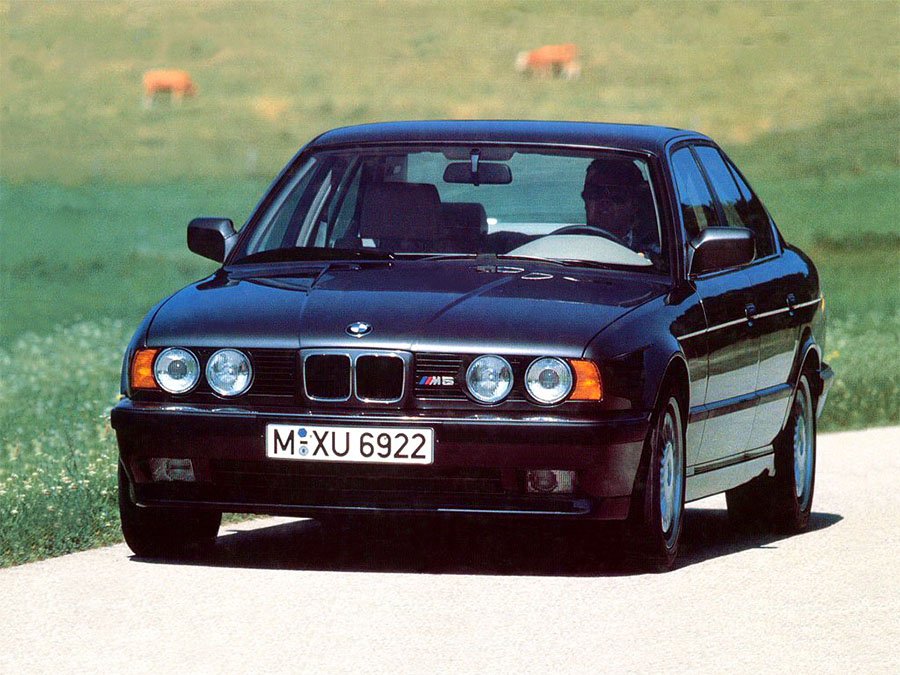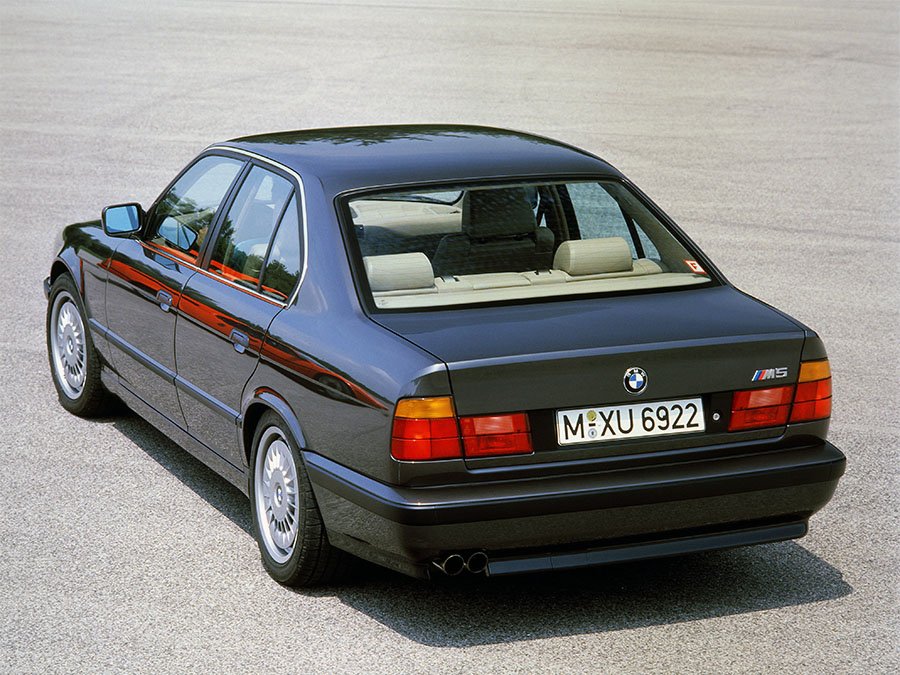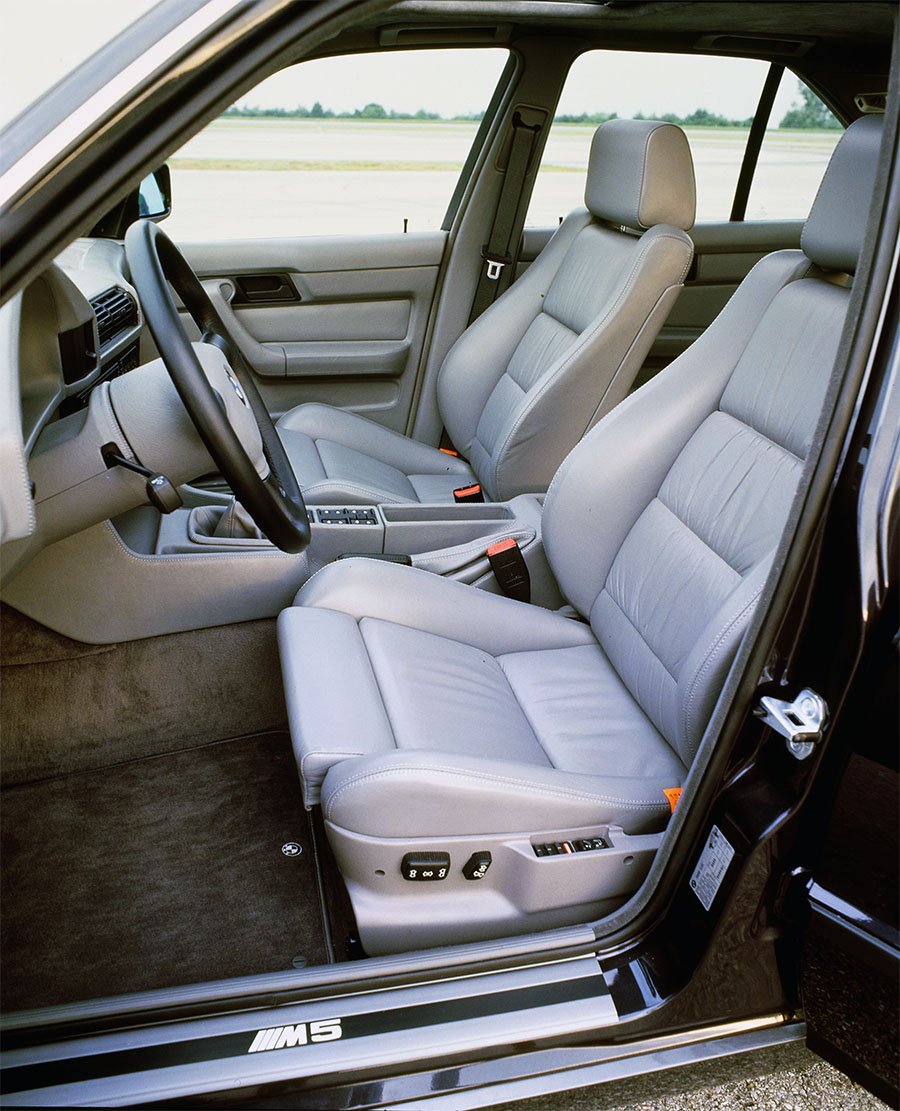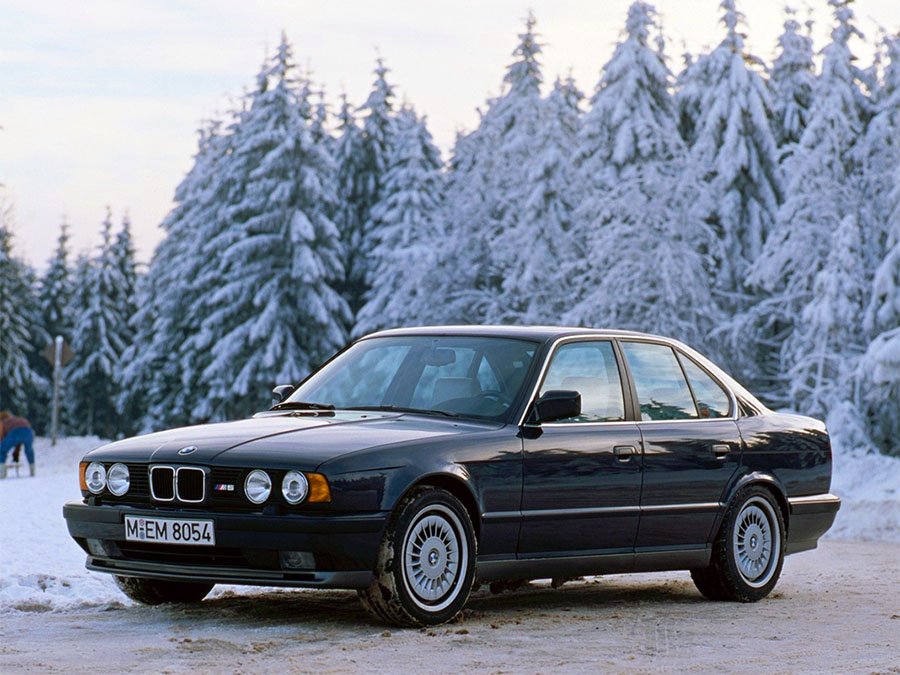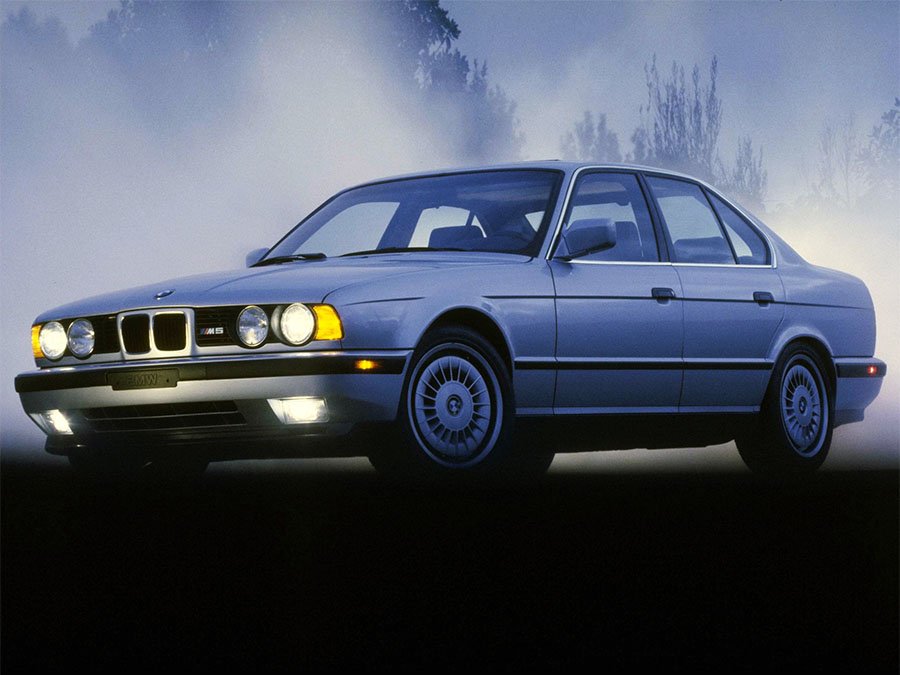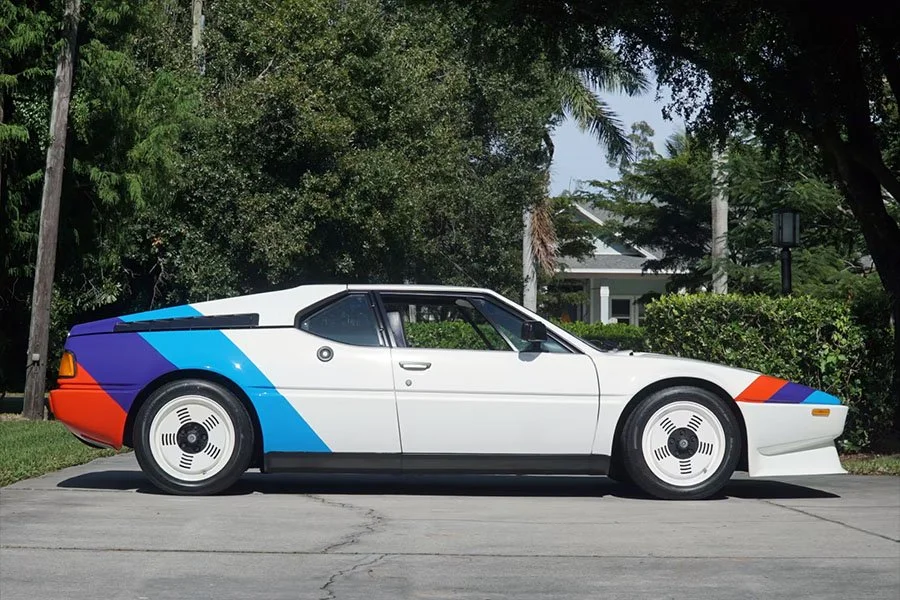Guide: BMW E34 M5 3.6 - a Historical & Technical Appraisal
/BACKGROUND
Although BMW had given the E12 5-series an update when it transitioned to E28 trim for the 1982 model year, the revamp was not that comprehensive and management knew a clean sheet design would be required before the 1990s dawned.
Development work on the next generation E34 5-series started in mid 1981 and continued until early 1987. Production began in November 1987 and the new model was unveiled to the press the following month.
Initially, the E34 5-series was offered with a choice of four straight six engines: the 520i, 525i, 530i and 535i.
An entry level four cylinder 518i joined the line up in 1989.
By this time, a range-topping M5 had also been launched with a 3.6-litre engine that pumped out a formidable 311bhp. In comparison, the previous range-topper (the 535i) produced 215bhp.
This latest iteration of the M5 was launched at the Frankfurt Motor Show in September 1988. Production had quietly begun two months earlier (in July).
The market for a hot BMW 5-series was first satisfied by a variety of E12-based Motorsport variants produced in a semi-official capacity between 1974 and 1979. The success of these cars and the subsequent 530 Motorsport Limited Edition (an over-subscribed homologation special for the South African market built during 1976 and 1977) convinced BMW to openly offer the M535i between 1979 and 1981.
The E28-based M5 was subsequently produced from 1984 until 1988.
The new E34 M5 was assembled at BMW Motorsport’s Garching facility where bodies received from the normal Dingolfing production line were finished by hand. It followed a by now well established approach to BMW’s M division variants; in addition to a vastly more powerful engine, an array of chassis enhancements were added along with an uprated gearbox and some subtle cosmetic upgrades.
CHASSIS
Like every E34 5-series, the M5 was based on a pressed steel bodyshell with MacPherson strut suspension up front and a semi-trailing arm arrangement at the rear.
Compared to the outgoing E28 5-series, the E34’s 2761mm wheelbase had been extended by a not inconsiderable 136mm which translated to a much more spacious cockpit than before.
To improve handling, BMW Motorsport fitted 25% firmer springs (self-levelling at the rear) that dropped the ride height by 20mm. Firmer dampers were also adopted along with thicker anti-roll bars (up from 23mm to 25mm at the front and from 15mm to 18mm at the rear).
Toe-in was made adjustable at the rear.
Stopping power was suitably enhanced thanks to bigger 315mm diameter ventilated front discs (up from 302mm). Solid rear discs with a 300mm diameter were imported from the regular E34 range.
Bosch ABS was standard along with engine speed-sensitive power steering. For the M5, a quicker, more responsive steering ratio was used (15.6:1 instead of 16.2:1).
New 8 x 17-inch M System I turbine-style alloy wheels immediately marked the new car out as something special. The wheels consisted of a two-piece design that comprised a forged five-spoke centre and a cast rim with outer cover.
A long-range 90-litre fuel tank was housed in the trunk floor.
ENGINE / TRANSMISSION
In the engine bay was the latest evolution of the BMW Motorsport straight six initially created for the M1 (Type M88/1) and then reconfigured with wet-sump lubrication and a host of other updates for use in the E24 M635 CSi and E28 M5 (M88/3).
Like its forebears, the iron-block / alloy head S38 B36 engine used in the E34 M5 incorporated dual overhead camshafts and four valves per cylinder. As usual, a BMW M Power-branded cam cover was fitted.
Displacement was increased from the 3453cc of previous iterations to 3535cc. This was achieved by extending the stroke from 84mm to 86mm (made possible by virtue of a new forged steel crankshaft). Bore remained unchanged at 93.4mm.
Other updates included new camshafts, an improved flywheel, equal-length stainless steel manifolds and an electronically-controlled butterfly valve in the inlet manifold to boost low and mid-range torque. The latest Bosch Motronic engine management was also fitted and the compression ratio was upped from 9.8:1 to 10.0:1.
To ensure the S38 B36 engine was able to meet global emissions standards, three-way catalysts were fitted to all cars with the exception of those destined for the Middle East and South Africa (where catalytic converters were still not a requirement).
Peak output was 311bhp at 6900rpm and 266lb-ft at 4750rpm.
In comparison, the old M88/3 engine had produced 282bhp at 6500rpm and 251lb-ft at 4500rpm.
The only gearbox offered was a Getrag 280/5 five-speed manual. A limited-slip differential with 25% locking factor was fitted as standard.
BODYWORK
Despite the 1980s trend for elaborate body kits with big spoilers and racey side skirts, BMW Motorsport had always taken a fairly conservative approach to how it enhanced the parent company’s designs.
The E28 M5 of 1984 to 1988 had been arguably the most restrained Motorsport product yet; to the untrained eye it was just another mid-range BMW sedan.
A broadly similar approach was taken with this latest offering.
Among the subtle array of cosmetic upgrades was a new front apron with a wider bank of horizontal intakes and a discrete chin spoiler. The side skirts were also made a little deeper which further accentuated the car’s already lowered ride height.
At the back, BMW Motorsport added an extended rear apron that housed a cutaway for the left-side exiting dual exhausts.
The M5’s front spoiler, side skirts and lower portion of the rear apron could be configured in a choice of two colours: Diamond Black Metallic or Sebring Grey Metallic.
Another unique M5 detail was the satin black panel between the tail lights to which the licence plate was attached.
M5 badges were fitted to the front grille and trunk lid.
INTERIOR
Like its predecessors, the new M5 interior was essentially that of a high spec. E34 5-series with a couple of special touches here and there.
Among the unique features was a three-spoke non-airbag M Technic II steering wheel. It featured a BMW Motorsport logo at the base of the vertical spoke and a centre pad coloured to match the rest of the upholstery.
There was also a leather gear knob with illuminated shift pattern and BMW Motorsport stripe.
The default seat upholstery was custom Motorsport fabric with leather bolsters. Sports front seats that were an option on the regular E34 were fitted as standard.
Unusually, in between the rear seats was a fixed centre console that meant the M5 was a four and not five seater.
The instrument binnacle was also home to some details not seen on other 5-series. BMW Motorsport added red needles, an oil temperature gauge underneath the rev counter (instead of a fuel economy meter) and an M logo between the speedometer and rev counter.
Either side of large analogue read outs for road and engine speed were smaller gauges for fuel level and water temperature. At the base of the binnacle was an array of digital read outs that supplied additional information.
Angled towards the driver was a centre console that housed the fresh air vents, audio system and ventilation controls.
M5-branded door sill plates were fitted all round.
Every M5 also came with a fully carpeted trunk complete with luggage net and a special storage compartment on the left-hand side.
OPTIONS
M5 buyers could enhance their cars with a long list of optional extras.
For the exterior, BMW offered wider 9-inch rear wheels, a body coloured rear spoiler, Shadowline trim, headlight wash / wipe and deletion of the M5 badges.
For the upholstery there was a leather seat upgrade, extended leather (to include the centre console, grab handles and glovebox lid) or full Nappa upholstery with hide covering the upper dash, A pillars, upper door panels, sun visors and rear parcel shelf. When full Nappa upholstery was specified, an alcantara suede headliner was also fitted. Two-tone upholstery was another option.
Other cockpit upgrades included electric seats, electric seats with memory function, heated seats (front and rear or front only), automatic climate control, an electric sunroof, an electric rear sun blind, burr walnut inserts, remote central locking, cruise control, an alarm system, an auto-dimming interior mirror, a green tinted windscreen, electric headrests, back seat reading lamps, a cassette storage box, a choice of audio systems and velour floor mats.
Via the BMW Individual department, special paint and upholstery could be requested along with the installation of electronic devices such as a phone, TV and even a fax machine.
WEIGHT / PERFORMANCE
At 1733kg the E34 M5 was 303kg heavier than the outgoing E28 variant.
It had a 0-62mph time of 6.2 seconds (a tenth quicker than the E28) and a top speed of 157mph (up from 152mph).
PRODUCTION CHANGES
After production started in July 1988, only a small number of updates were made.
In October 1989, the rear brakes were switched from solid to ventilated.
Production of right-hand drive examples began in October 1989.
In April 1990, BMW made the unusual fixed rear centre console an option instead of standard.
For the 1991 model year (production of which began in September 1990), new ZF Servotronic road speed-sensitive power steering (instead of engine speed sensitive) was added to the options list.
NORTH AMERICAN VERSION
Production of a North American spec. M5 began in December 1989. For the first time, the engine used was the same as those in Rest of World derivatives.
However, to comply with local safety legislation, there were still some minor differences such as additional side marker lights and a four-spoke airbag steering wheel from the regular 5-series. North American M5s also came with leather upholstery as standard.
The first raft of changes to the North American specification were phased in during September 1990 (for the 1991 model year).
They included deletion of the fixed rear centre console, the addition of a tilting steering column, an updated head unit for the audio system and the addition of free-form instead of ellipsoid head and fog lights. Cars equipped with black Nappa leather upholstery now came with a black instead of grey headliner.
From September 1991 (for the 1992 model year), ZF Servotronic road speed sensitive power steering replaced the old engine-speed sensitive arrangement. In addition, the clutch was made easier to operate, the rear axle ratio was changed (from 3.91:1 to 3.73:1) and remote central locking became standard. By this time, most other markets had switched over to the new 3.8-litre version of the E34 M5 (covered separately).
In March 1992, new door sill plates were adopted.
From September 1992 (for the 1993 model year), the North American M5 adopted several of the cosmetic features from the 3.8-litre M5 to include the five-spoke M System II wheels and its aerodynamically-styled M Technic exterior mirrors. As per the 3.8, Granite Silver Metallic replaced Sebring Grey Metallic as the alternative to Diamond Black Metallic for the M5-specific front spoiler, side skirts and rear apron.
Inside, Birds-eye maple wood inserts were fitted in either grey or black and M tri-colour stitching was added to the steering wheel (which now came with a thicker rim plus a revised centre pad and thumb grips).
Mid way through the 1993 model year, Shadowline exterior trim became standard.
The Canadian market version (of which less than 200 were built) differed to those cars destined for the USA primarily on account of the airbag steering wheel being optional, heated front seats and headlight wash / wipe being standard and the fixed rear centre console remaining as an option after September 1990 (when it was no longer offered in the USA).
SOUTH AFRICAN VERSION
M5s for the South African market were assembled from Complete Knock Down kits (CKD) at BMW’s Rosslyn plant from September 1990. As per Middle Eastern market derivatives, they did not use a catalytic converter.
Nappa leather upholstery was fitted as standard and the door trim panels were subtly different to German-built examples.
M5 CECOTTO
During the spring of 1991, BMW produced a batch of 20 Cecotto edition M5s built in honour of their Venezuelan driver, Johnny Cecotto, who had won the 1989 Italian Touring Car Championship and the 1990 Spa 24 Hours at the wheel of an E30 M3. 1990 had also seen Cecotto finish as runner up in the fiercely contested DTM series.
The 20 customer cars comprised ten finished in Lagoon Green Metallic with two-tone Parchment and Light Parchment upholstery and ten in Mauritius Blue Metallic with two-tone Silver Grey and Light Silver Grey upholstery.
These luxuriously equipped machines all came with complete Nappa leather upholstery, burr walnut inserts, electric and heated front seats with driver-side memory function, heated rear seats, automatic climate control, an electric sunroof, an electric rear sunshade, ZF Servotronic power-assisted steering, headlight wash / wipe, a BMW Bavaria C Business radio, velour floor mats and a special leather service book pouch with key holder and gold pin.
In addition to the 20 customer cars, BMW also produced two prototypes.
M5 WINKELHOCK
Another batch of special cars built during spring 1991 was the M5 Winkelhock edition. Jo Winkelhock had won the 1990 Nurburgring 24 Hours driving an E30 M3 for BMW, a feat he repeated in 1991.
Whereas the M5 Cecotto was configured with practically every comfort upgrade available, the Winkelhock M5 was more performance-oriented.
50 customer cars were built, all of which were painted Jet Black with the M5-specific sills and aprons in Sterling Silver Metallic. The normally optional 9-inch wide rear wheels were fitted as standard along with Shadowline exterior trim.
The interior was enhanced with special high-backed Recaro SR front seats. Upholstery was Black Nappa leather for the seat bolsters with M-striped Anthracite cloth inserts applied to the seat centres and door panels. The sporty nature of the interior was further enhanced with red seatbelts and alcantara suede co cover the steering wheel rim, shift knob, gear gaiter and parking brake handle.
To save weight, BMW Motorsport fitted a smaller 66 amp instead of 88 amp battery, an 80 instead of 90-litre fuel tank and much of the sound insulation was deleted. Likewise, electric rear windows and fog lights were absent. Simplified sun visors without vanity mirrors were fitted.
All in all, a total of 40kg was saved.
An electric sunroof, velour floor mats and a BMW Bavaria C Business radio were fitted as standard. Like the Cecotto edition, each car came with a special leather service book pouch, key holder and gold pin.
One prototype was built in addition to the 50 customer cars.
M5 NAGHI MOTORS
The BMW importer for Saudi Arabia, Naghi Motors, commissioned a batch of 15 special M5s that were produced during the spring of 1992. Dubbed the M5 Naghi Motors edition, these cars came in a choice of three exterior colours (Jet Black, Alpine White or Lagoon Green Metallic) with five of each produced.
Inside, high-backed Recaro SR front seats with black leather bolsters were fitted (as per the Winkelhock edition). The seat centres and door panel inserts were trimmed in either Anthracite M fabric from the new 3.8-litre M5 (Jet Black and Alpine White examples) or Neon Green / Anthracite striped fabric from the E30 3-series Design Edition (Lagoon Green Metallic examples).
Other special equipment included the M System II wheels from the 3.8-litre M5 (to include the wider 9-inch rear rims) and a Hirschmann in-car phone antenna.
Jet Black and Alpine White cars came with red seatbelts.
Jet Black examples also came with Sterling Silver Metallic M5-specific sills and aprons as per the M5 Winkelhock edition.
Normally optional equipment bundled in as standard included Shadowline exterior trim, a rear spoiler, automatic climate control, a BMW Bavaria Cassette III audio system, a green-tinted windscreen and velour floor mats.
Upon arrival in Saudi Arabia, door sill plates embossed with the Naghi Motors insignia were added. Jet Black and Alpine White examples were further accessorised with BMW Motorsport hood stripes and red leather accents for the steering wheel, gear lever and parking brake handle.
As per all Gulf specification M5s, these cars were not fitted with catalytic converters.
END OF PRODUCTION
BMW unveiled the new 3.8-litre M5 at the Frankfurt Motor Show in September 1991 and production got underway in December.
Several markets continued to be supplied with 3.6-litre M5s until as late as the spring of 1993 to include North America, Japan, the Middle East and South Africa (most of which never received the 3.8-litre version).
Production figures for the 3.6-litre E34 M5 were as follows:
LHD Euro market (07/88 to 04/92) 5877 units
RHD Euro market (11/89 to 11/91) 524 units
LHD North American market (12/89 to 04/93) 1678 units
RHD South African market (09/90 to 03/93) 265 units
Text copyright: Supercar Nostalgia
Photo copyright: BMW - https://www.bmw.com

